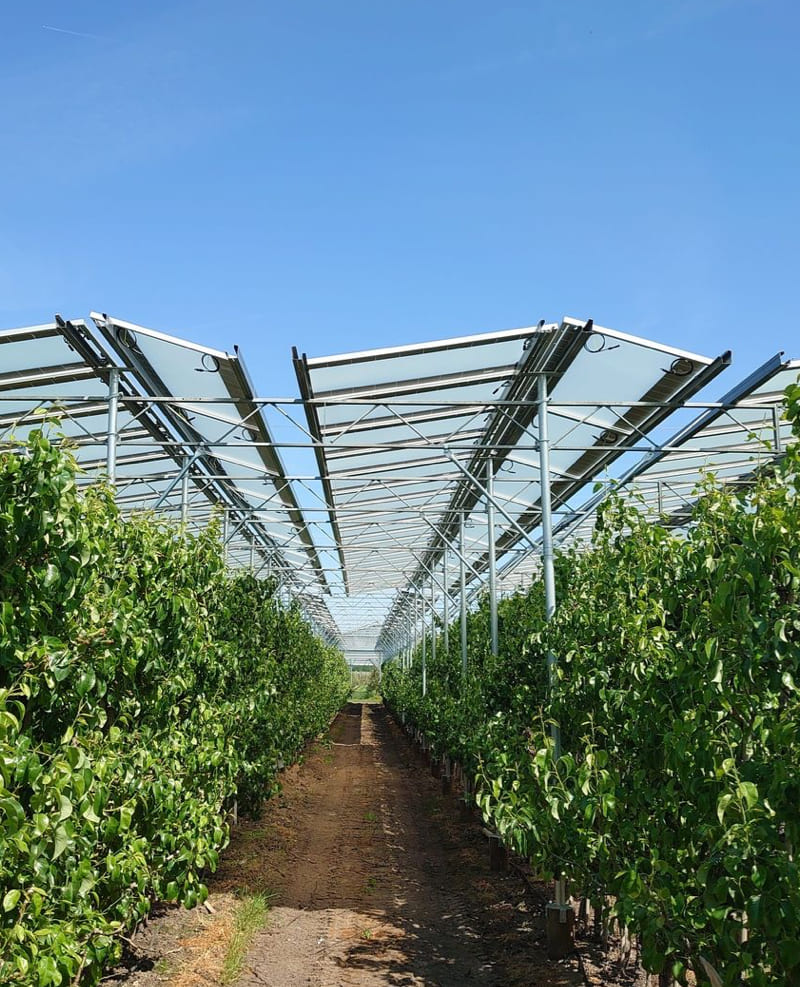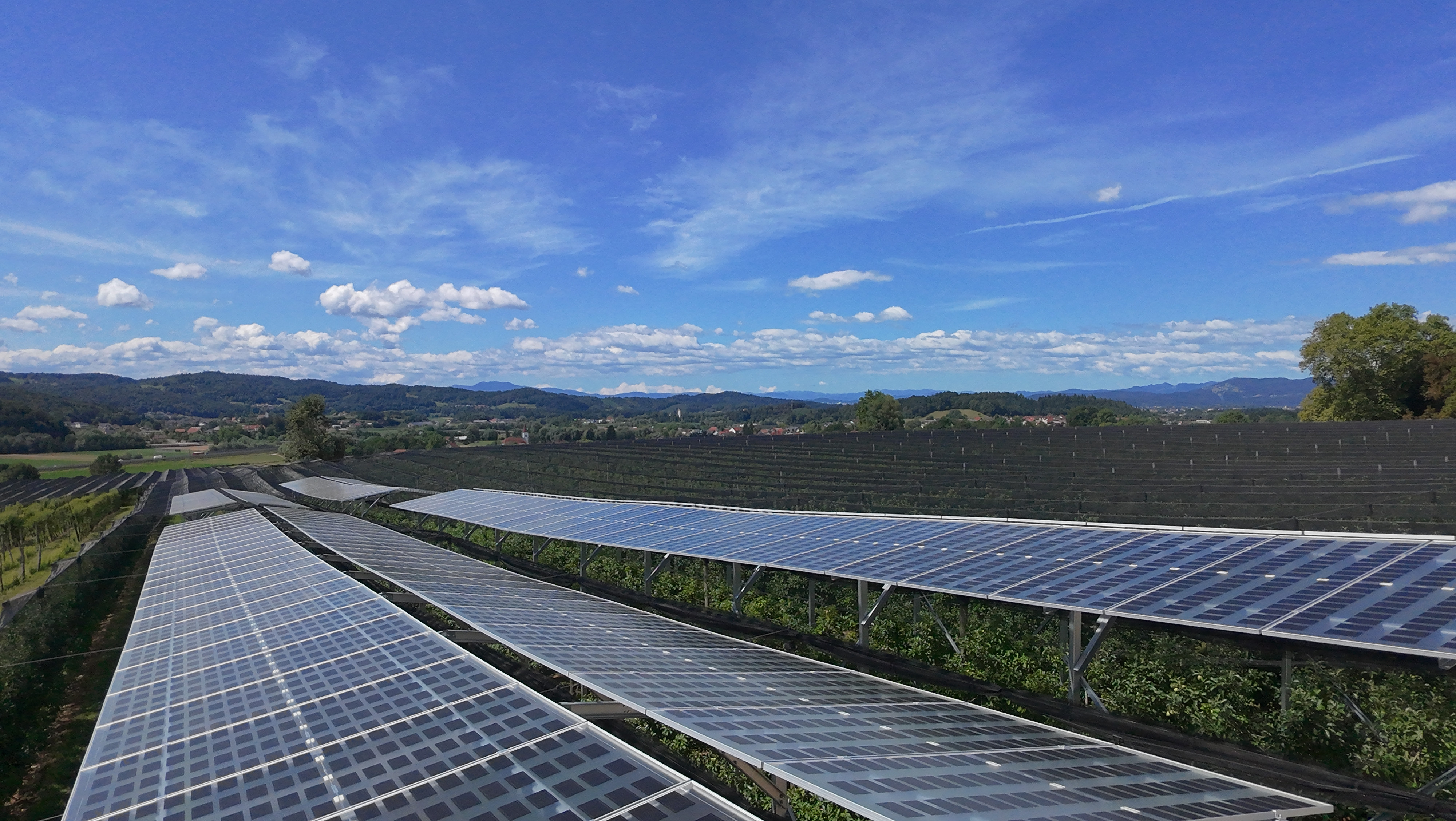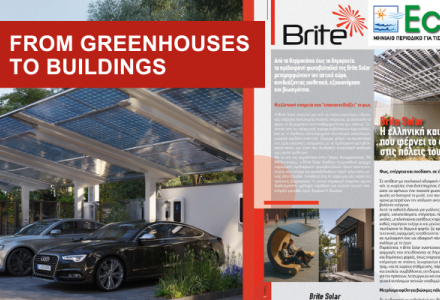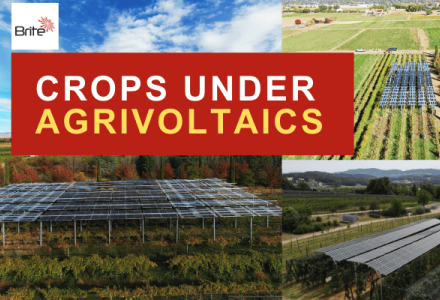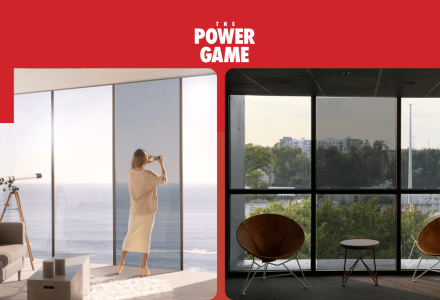Agri-PV in Apple Orchards: Pilot Project for Food and Energy Production in Slovenia
In a research apple orchard in Slovenia, a pioneering Agri-PV pilot project is being implemented. Within this project, solar panels were installed above apple trees, combining fruit production with solar energy generation. It is the first agricultural photovoltaics (Agri-PV) demonstration site in the country, officially presented by Slovenia’s Minister of Environment and Energy, Bojan Kumer, and Minister of Agriculture, Mateja Čalušič. Brite Solar played a decisive role in the initiative by providing specialized semi-transparent solar panels. These panels allow sufficient sunlight to reach the plants while simultaneously generating clean energy – laying the foundation for the dual use of agricultural land.
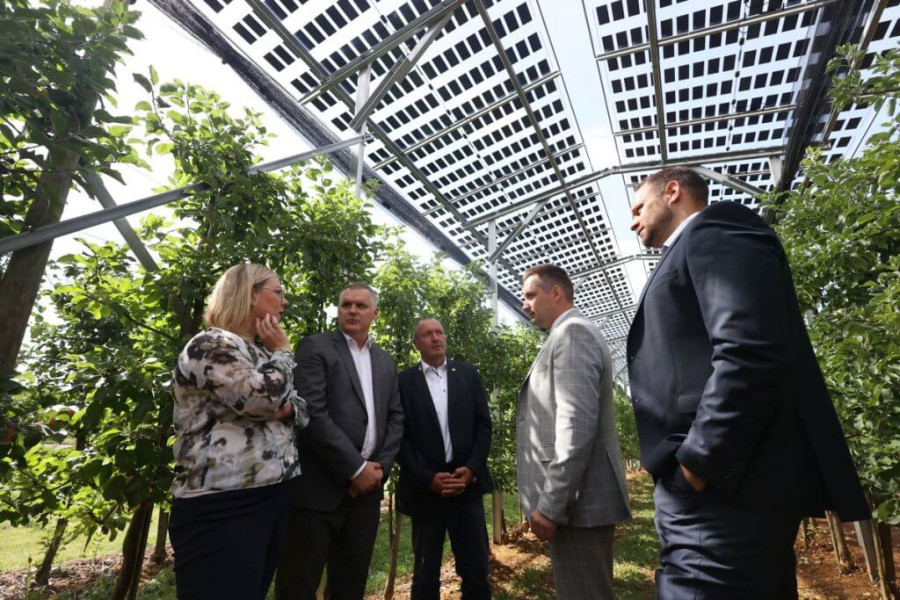
What is Agri-PV?
Agri-PV, also known as agrivoltaics or agricultural photovoltaics, is an innovative approach that combines agricultural land use with solar energy production. By installing semi-transparent solar panels above or between crops, farmers can achieve dual land use: growing food and generating clean energy simultaneously.
This technology offers multiple advantages: improved crop protection, reduced water use, energy autonomy, and climate resilience. It is not about competing with farming, but about ensuring sustainable development by making agricultural land more productive in two ways.
The Pilot Apple Orchard in Brdo pri Lukovici
In Slovenia, at the Agricultural Institute’s research orchard in Brdo pri Lukovici, the first Agri-PV pilot project was officially presented. The installation integrates Brite Solar’s semi-transparent solar panels in apple orchards of the Kiku variety, chosen because apple production is one of the most important branches of Slovenian agriculture.
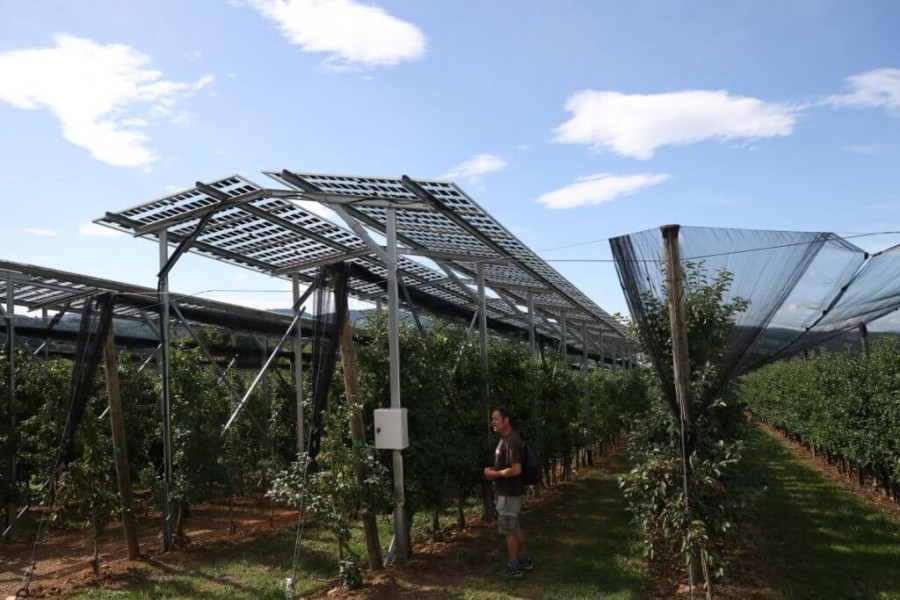
Main features of the system:
Capacity & size: The system consists of 208 modules with a total power of ~52 kW, covering about 120 meters above apple tree rows.
Transparency levels: Two types of semi-transparent panels with 54% and 70% light transmission were used to study the effects of different shade levels on plant growth, fruit development, and energy generation.
Minimal intervention: The supporting structure was driven into the soil without concrete foundations. No trees were cut, and farming practices continued without interruption. The orchard remains fully functional under the panels.
Funding: The Swiss Contribution program financed the pilot project with € 205,000, with an additional €2 million expected for similar dual land-use projects.
This project was presented with the participation of Slovenia’s Minister of the Environment, Climate, and Energy, Bojan Kumer, and the Minister of Agriculture, Mateja Čalušič, highlighting the country’s political support for agrivoltaics.
Benefits for Farmers and Crops
Reducing heat stress: During hot summer days, partial shading from the panels cools the trees and reduces direct solar radiation. This lowers plant heat stress and helps improve vitality. Slovenian researchers note that on heatwave days, apple trees often require protective spraying to avoid sunburn – a practice they hope will be reduced or eliminated thanks to the shading effect of the panels.
Frost and hail protection: In spring nights with frost, the panels act as a thermal umbrella. They trap heat and keep the temperature slightly higher underneath, offering crop protection against frost damage. In international cases, this effect was enough to save orchards from complete loss due to frost. The panels also mitigate hail and heavy rain impact, although they do not fully replace traditional anti-hail nets.
Improved fruit quality: Shading may slightly reduce overall yield, but the apples produced are larger and of higher quality. Apple trees naturally set too many fruits, which farmers must thin by hand or chemically. The shading from the panels works as a kind of “natural thinning,” resulting in fewer but better apples. The target is to achieve over 95% of apples in the first commercial category, even if the total harvest is somewhat smaller. Shading also prevents sunburn on the fruits, ensuring a better appearance and higher market value.
Another decisive advantage of Brite’s solar panels is the nanotechnology coating, which converts ultraviolet (UV) radiation into red light, the most beneficial spectrum for photosynthesis. Thanks to this innovation, crop yields can increase by up to 40%. These benefits, combined with the parallel generation of renewable energy, demonstrate why agrivoltaics are considered so promising.
“I believe the results of this research will be a valuable contribution to the development of agrivoltaics in Slovenia,” stated Minister Bojan Kumer during his visit to the pilot orchard, emphasizing that the country has significant potential for such dual-use projects. In fact, it is estimated that Slovenia’s agricultural land alone has a theoretical solar potential of 47 GW (47,000 MW) of installations. Of course, only part of this can be practically utilized, but the figure illustrates the enormous scope for producing clean energy without consuming additional land.
Challenges and Considerations
Although the potential of Agri-PV for open-field crops is significant, some challenges remain. Slovenia has one of the lowest shares of arable land per capita in Europe, making farmland extremely valuable. For this reason, some experts view agrivoltaics with caution.
According to legislation, installing panels on fertile irrigated land is prohibited. Agri-PV is only permitted in permanent plantations (such as orchards and vineyards), lower-quality land, or degraded areas. In addition, regulations limit the reduction in agricultural production to 15–20%.
Experts stress that food production must remain the priority. Agri-PV is acceptable only if it does not compromise the agricultural potential of the land.
Scientific Contribution and Future Prospects
The project in Slovenia is expected to remain operational for at least five years. During this period, researchers will collect valuable data on the interaction between semi-transparent solar panels and fruit orchards.
Dr. Blaž Germšek, head of the project, underlined the importance of the research: “Analyses within this pilot will show which crops, under what conditions, and with which panel configurations allow efficient dual land use without reducing agricultural productivity.”
Looking ahead, the vision goes beyond just energy production:
Robotics: Apple orchards face challenges with labor availability. The panels can power robots for spraying, mowing, and harvesting.
Energy autonomy: With the addition of battery storage, orchards can become fully energy self-sufficient, reducing reliance on fossil fuels.
Smart farming (IoT): Sensors and AI can optimize irrigation, monitor plant health, and adjust shading levels.
This integration of agrivoltaics, automation, and smart farming could redefine orchard management for the future.
FAQ
Q: What is Agri-PV? Agri-PV, or agrivoltaics, is the use of agricultural photovoltaics to install panels above crops, allowing simultaneous food and energy production.
Q: Does Agri-PV reduce yields? Slightly, in some cases. However, the higher quality of the fruit often compensates with better market value.
Q: Can Agri-PV protect against frost? Yes. The panels trap heat and keep the temperature higher underneath, protecting orchards from frost damage.
Q: How long do Brite Solar panels last? Brite Solar’s semi-transparent solar panels have a lifespan of over 25 years, with certifications for durability and safety.
🌱 Interested in applying Agri-PV solutions to your farm?




















